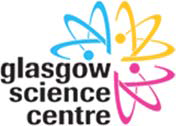

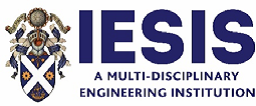
Profeng Lecture
4.30 pm, Monday, 15 June 2015,
Venue: Glasgow Science Centre
Considering a career in engineering?
Engineering Video Games and Beyond
Abertay University in Dundee is home to the UK’s first national Centre for Excellence in computer games education and houses the biggest Sony Playstation development lab in Europe. IESIS and partners arepleased to bring to school students this series of talks and illustrations about careers in software
engineering and games development from three of the University’s leading experts. They will cover how
games are made and how computer games technology is increasingly being used in other areas, such as
Hollywood movies, medical research and environmental planning. Among other projects Abertay’s experts
have applied the technology to the pre‐production work on last year’s blockbuster Dawn of the Planet of
the Apes, and are also using it to speed up the testing of anti‐cancer drugs.
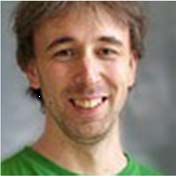 Jim Bown is Professor of Systems Biology and played a key role in developing
Jim Bown is Professor of Systems Biology and played a key role in developing
Abertay’s mathematical modelling and bioinformatics research centre. Jim will show examples of
computer interactive visualisation applied to assisting science and engineering including design of urban environments and development of anti‐cancer drug combinations.
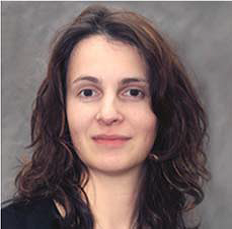 Dr Natalie Coull teaches Abertay’s Masters degree in Ethical Hacking andComputer Security and her research covers improving computer security for children by bridging the gap between their knowledge oftechnology and their lack of awareness of cybersecurity. Natalie will discuss recent cyber attacks including the “Sony Hack” and the “Adobepassword leak” and the lessons that can be learned from them.
Dr Natalie Coull teaches Abertay’s Masters degree in Ethical Hacking andComputer Security and her research covers improving computer security for children by bridging the gap between their knowledge oftechnology and their lack of awareness of cybersecurity. Natalie will discuss recent cyber attacks including the “Sony Hack” and the “Adobepassword leak” and the lessons that can be learned from them.
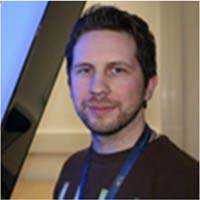 Matt Bett is a lecturer in games engineering, teaches Abertay’s computer games courses, researches virtual reality and has spent recent years developing new ways of controlling “virtual cameras”. His work with FoxStudios on a film‐making tool based on his virtual camera technology, whichwas used on the hugely successful Hollywood blockbuster Dawn of the Planet of the Apes has created world‐wide interest.
Matt Bett is a lecturer in games engineering, teaches Abertay’s computer games courses, researches virtual reality and has spent recent years developing new ways of controlling “virtual cameras”. His work with FoxStudios on a film‐making tool based on his virtual camera technology, whichwas used on the hugely successful Hollywood blockbuster Dawn of the Planet of the Apes has created world‐wide interest.
REGISTRATION
This event is free but attendees should register.
Registration can be done on an individual basis or by a group.
To register please contact IESIS at
iesis@btconnect.com or IESIS, The Clydeport Building 16
Robertson Street, Glasgow G2 8DS.
FOR IMPORTANT INFORMATION ABOUT CAREERS IN PROFESSIONAL
ENGINEERING SEE
www.profeng.org
TRAVEL DIRECTIONS
Got Sat Nav? Pop in our postcode: G51 1EA
BY CAR
From the M8 (east or west) take junction 24 and follow brown tourist signs.
For those more familiar with Glasgow and travelling East along the M8, it is possible to leave at Junction 19, travel
down the Broomielaw, cross at the Clyde Arc (‘Squinty Bridge’) and travel along Govan Road and into Pacific Quay.
From the M77 stay in the left hand lane (marked Tradeston/ Kinning Park) as the motorway merges with the M8. Take
the next exit (junction 21) and follow brown tourist signs. From the Clydeside Expressway take SECC (E) exit and then
follow brown tourist signs.
There is a Customer Car Park and Coach Park at Glasgow Science Centre. Guests will be given a parking ticket on
arrival to the car park, this can be validated by Science Centre staff at the front desk. The ticket will be validated so
that no charge will apply to those attending the event.
BY BUS
First Bus No 90 (Paisley Road West)
McGill’s Bus 23 and 26 (Pacific Drive)
City Sightseeing Tour Bus (Pacific Quay)
BY TRAIN
Exhibition Centre is located on the Argyle Line with regular services running from Glasgow Central and Partick
Stations. There is a covered walkway from the station to SECC, from where you walk past the Crowne Plaza Hotel
and over the river to Glasgow Science Centre (10-15 mins.)
BY SUBWAY
The nearest station is Cessnock. Exit the station and turn left, then turn right onto Brand Street and then left onto
Lorne Street. Turn left onto Pacific Drive and the entrance to Glasgow Science Centre is at the roundabout. (20-25
mins.)
 Please find below information about Aldi’s Retail Apprenticeships. Location: Erskine, Paisley and Weavers Road Number of vacancies: 8 Wage: £5.30 per hour Closing date: 31/08/15
Please find below information about Aldi’s Retail Apprenticeships. Location: Erskine, Paisley and Weavers Road Number of vacancies: 8 Wage: £5.30 per hour Closing date: 31/08/15







